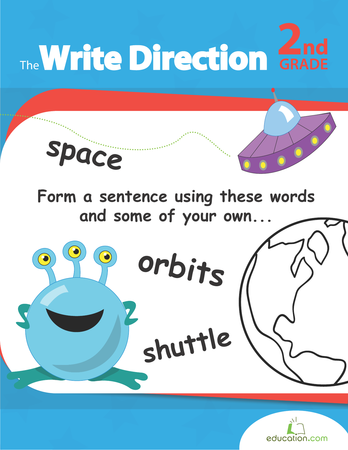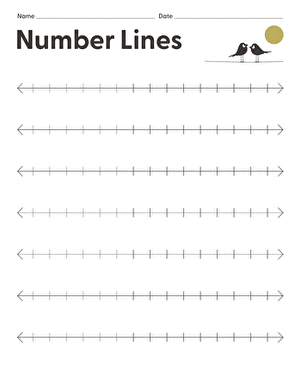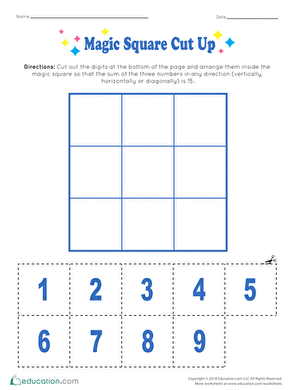Science project
Show the Direction of Magnetic Field Lines
Magnetic fields are invisible. You can’t see them, but you can see what they do, like attract a paper clip or push another magnet away. But wouldn’t it be cool if we could find out how to show the direction of magnetic field lines? This activity will help you do just that. You'll even find out how to preserve your images of magnetic fields: for a science fair project, or your own mag-nificent art.
Problem:
What do different magnetic fields look like?
Materials:
- Grown-up helper
- Iron filings
- Safety goggles
- Heavy latex gloves
- Tablespoon
- Empty salt shaker
- A variety of magnets, of different sizes and shapes. Make sure to have at least two bar magnets
- Tape
- Plain white paper plates
- Spray adhesive or clear gloss urethane
- Pen
Procedure:
- Iron filings look safe, but be aware that they can be sharp and can cut your hands or eyes. Put on your safety goggles and gloves. Because you will be using spray adhesive for this project, make sure you are working in a well ventilated area.
- Use the scissors to cut the steel wool into tiny pieces that you place in the salt shaker. You’ll need about two tablespoons. If you purchased premade iron filings, pour a couple tablespoons iron filings into the salt shaker.
- Tape a bar magnet to the bottom of a paper plate.

- Lightly shake the iron filings onto the top surface of the plate. When you see the filings begin to form lines, stop and move on to another area. Don’t cover the plate with too many filings, or you won’t be able to see any pattern emerge!
- Have a grown-up help you spray your adhesive or spray gloss a safe distance away from the paper plate. The pattern the iron filings made should be preserved.
- Carefully remove the magnet from the bottom of the plate.
- Now, try taping two bar magnets to a fresh paper plate. Arrange them so that the like (similar) poles are next to each other. The like poles push against each other. With this fact in mind, what do you think your force lines will look like? Record your hypothesis in the form of a sketch, and explain why you think the force lines will look this way.

- Repeat steps 5-7 for your new magnet arrangement.
- Get a third paper plate and arrange the bar magnets so that the unlike poles are near each other. The opposite poles are attracted to each other.

- How do you think this magnetic field might look different than the others? Make a new hypothesis by sketching what you think the new force lines might look like.
- Repeat steps 5-7 for your new magnet arrangement. Was your hypothesis correct?
- Try other kinds of magnets and experiment with arranging them in different ways underneath each plate. Make sure you record exactly how you arranged the magnets in each new test, and sketch what you think their field lines might look like before you repeat steps 5-7. Here's one possible arrangement you could try:

Results
With the single magnet, the iron filings form curved lines beginning at one pole and ending at the other. When the two magnets are arranged with the like poles near each other, each magnet demonstrates the same curved lines from pole to pole, but the each magnet’s lines bend away from the end of the opposing magnet. When opposite poles are placed near each other, the lines of force at the end of one magnet curve towards the other magnet’s nearest pole.
Why
When the tiny rod shaped iron filings come in contact with the magnetic field, the north pole and the south pole of each individual filing lines up with those of the nearest bar magnet. Because the filings are so tiny and there are so many of them, we soon see a line. Cobalt and nickel are the only metals besides iron that are affected by magnets. This experiment does not work with copper wool!
Going Further
Would you like to see what a magnetic field looks like in three dimensions? You can by trapping the iron filings in clear gelatin. Ask a grown-up to make a small batch of clear, unsweetened gelatin and pour it into a small glass jar. Add a couple tablespoons of iron filings to the mixture, and then cool the gelatin until it begins to thicken slightly. Tape a magnet to outside bottom of the jar and refrigerate. In a couple hours, you should have a three-dimensional model of a magnet’s field. Just make sure no one mistakes it for desert!
Education.com provides the Science Fair Project Ideas for informational purposes only. Education.com does not make any guarantee or representation regarding the Science Fair Project Ideas and is not responsible or liable for any loss or damage, directly or indirectly, caused by your use of such information. By accessing the Science Fair Project Ideas, you waive and renounce any claims against Education.com that arise thereof. In addition, your access to Education.com's website and Science Fair Project Ideas is covered by Education.com's Privacy Policy and site Terms of Use, which include limitations on Education.com's liability.
Warning is hereby given that not all Project Ideas are appropriate for all individuals or in all circumstances. Implementation of any Science Project Idea should be undertaken only in appropriate settings and with appropriate parental or other supervision. Reading and following the safety precautions of all materials used in a project is the sole responsibility of each individual. For further information, consult your state's handbook of Science Safety.












